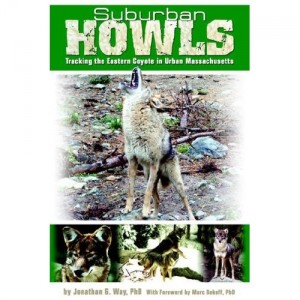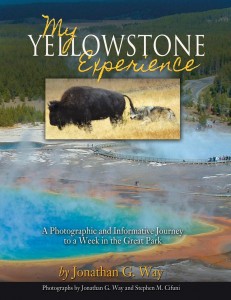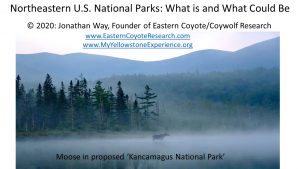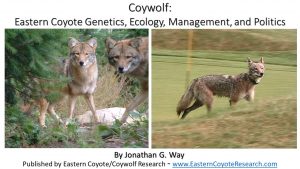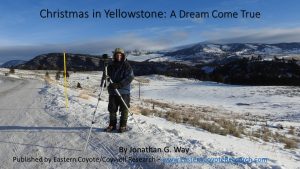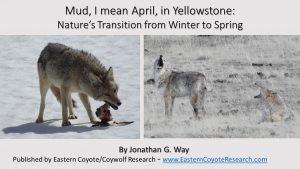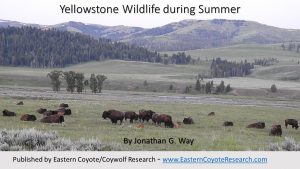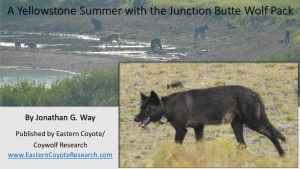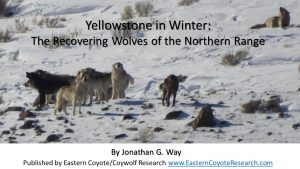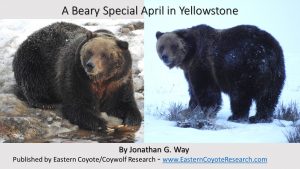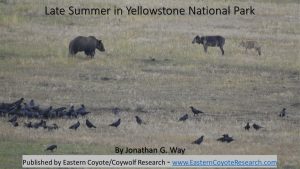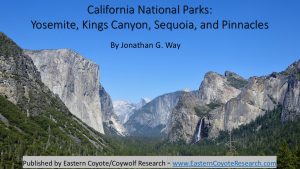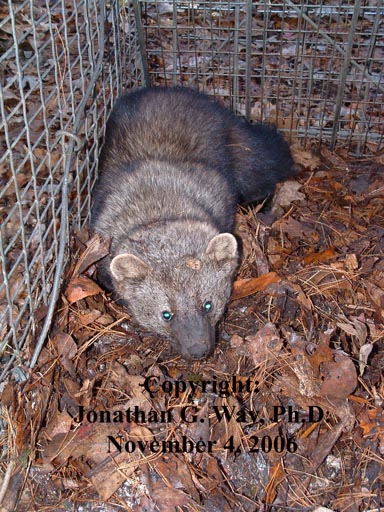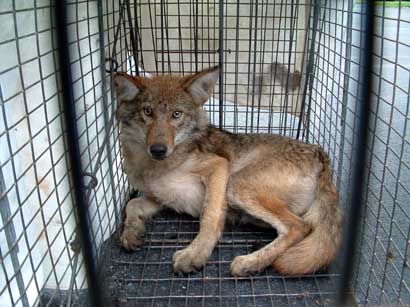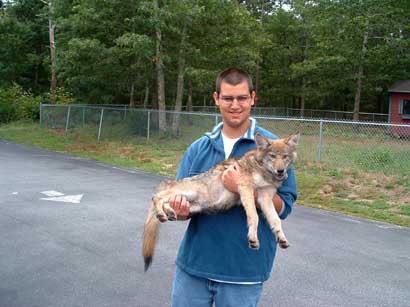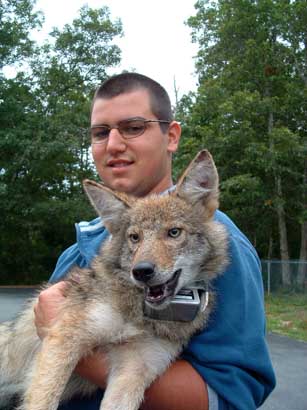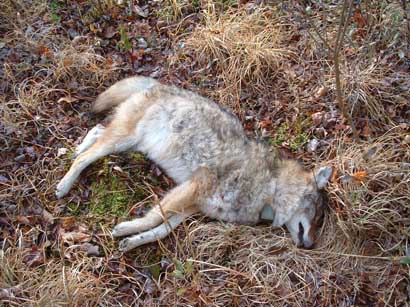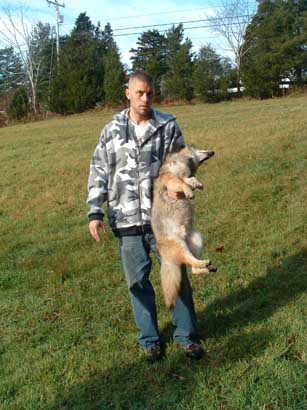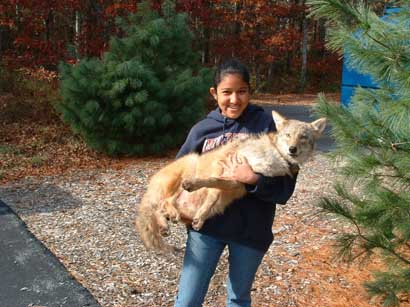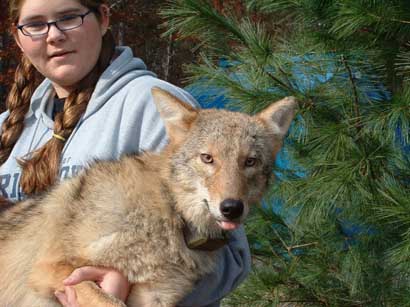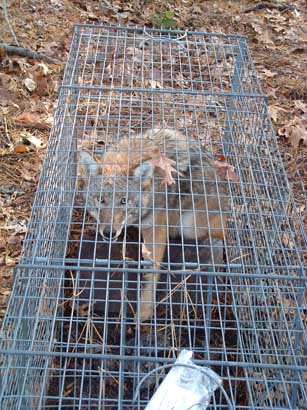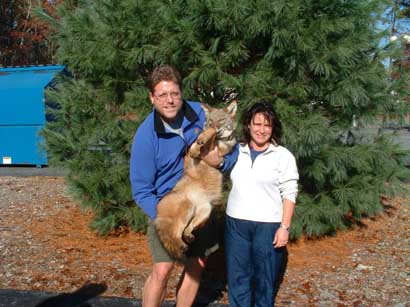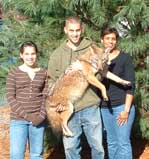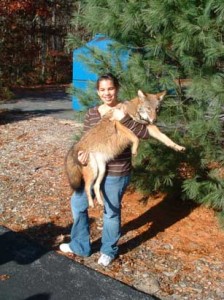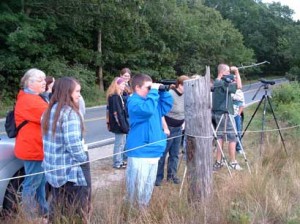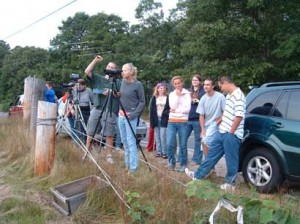Happenings since publication of Suburban Howls: The good, the bad, and the uglier
Contents:
Fisher captured on Cape Cod
Additional coyotes captured!
Recent Coyote News – 1st half of 2007
More coyotes killed by gun-shot including “famous” Casper
No permits, no research
—–
Fisher captured on Cape Cod
Lets start with the positives first. On 4 November 2006 we captured the first fisher documented alive on Cape Cod. The Cape Cod Times (newspaper) had previously reported on a couple of other road kills found on the Cape but this is the first one documented alive. We captured this beautiful specimen, estimated to be a young ~15 lb male, within the town of Barnstable (no further details will be given on location). It ran out of the trap in good health!
View picture of that fisher capture:
Additional coyotes captured!
In my book, I report Raider as the last (most recent) coyote that we had captured back on 15 June 2006. Since then, we have captured 3 additional coyotes.
1. Sup (Sill’s pup), a 19.4 lb, 5 month old male pup captured on 2 September 2006. He was a healthy, but small pup. We were hoping that he was going to become a helper for Sill’s pack but unfortunately he died of mysterious (unknown) causes on 11 November 2006. He weighed 26.4 lbs.
See pictures of Sup, including one of my students, Matt Joseph, holding him. It is always very disappointing to see a coyote that we tracked and legitimately cared about, die.
2. Walnut (Cake’s pup), a 30.3 lb, 7 month old male pup captured on 5 November 2006. Ironically, he was captured the day after the fisher capture in the very same trap and exact location. He was one of Cake’s pups and remained on territory until dispersing in February 2007. I have not located him since.
See pictures of Walnut being held by two of my students Munmun Dhalaria (left) and Rebecca Cabral.
3. Mup (Mystic’s pup), a 32.1 lb, 7 month old female pup captured on 11 November 2006. She has remained as a helper coyote for summer 2007 despite her collared father, Mystic (see below), having been shot and killed over the winter.
See pictures of Mup getting trapped, then being held by my colleague at Boston College Eric Strauss, and his wife Erin, as well as a picture of Mup being held by myself and my girlfriend, Tara Eaves, and her daughter Aimee.
Recent Coyote News – 1st half of 2007
We are now down to 5 collared coyotes following recent deaths, mostly due to gunshot (see below). Long-time collared coyote Sill, is still alive and we have had him collared for 7.5 of his 8+ years of life. Mup, Cake, Raider, and Snale are also still being monitored. Sill, Mup, Cake, and Raider are parts of separate but bordering packs (in that order) with Mup’s group’s range situated between Sill and Cake’s, and Cake’s group’s territory located between Mup and Raider’s packs. All groups have pups in 2007 and all groups consist of 3-4 adults (including full-grown yearlings like Mup) and around 5 pups. I have observed pups from each litter and have videoed a regurgitation from Cake to one of her pups – phenomenal footage! It is always so exciting and satisfying to see coyotes raising their new pups. They show such of a love of life and caring for each other. Plus, they are often visible during a portion of the summer (some groups are certainly more visible than others). It is nice to know that no matter how cruelly people still treat coyotes (despite data, like in my book, showing that is not needed), that they will always survive and be present in a given area.
Raider is the most interesting coyote, in my opinion. She lives in the most urban part of Cape Cod yet has the biggest range of any of our collared coyotes (about 15 square miles). She regularly travels throughout her range, usually with her mate, and scent-marks throughout (I usually see this at night through a night scope). It is amazing to see her in seemingly diverse locations on any given night. If it weren’t for the flaming rednecks that target and kill my collared coyotes (and get away with it – see below) I would love to show you a map with her locations. However, that won’t happen until coyote hunting is made illegal in the town of Barnstable, Massachusetts.
Finally, Snale, former breeding female of the Sandy Neck area, is now a solitary resident or transient. She has clearly been displaced from Sandy Neck (although we don’t have new permits to collar the new coyote(s) on Sandy Neck) and she now uses areas in between existing collared coyotes. She clearly is hanging around in familiar areas since she is usually located within the town of Barnstable. Compare this to coyotes like Walnut that simply vanish from our radar once they decide to disperse.
More coyotes killed by gun-shot
In the past year we have lost more collared coyotes to gunshot which now equals road kill as the most common cause of death. However, many more of the shot coyotes are adults who have learned to cross roads. In other words, many (but not all) of our road-killed coyotes are inevitably young coyotes, especially pups during their first fall and winter of life.
The lives of Mystic in Marstons Mills, and Squid and Casper on Great Island in Yarmouth, have been taken. Additionally, a large gray male that I observed with Mystic and likely was a full-grown son of his, was also killed. Through the help of a caring hunter I found his carcass that was clearly left in the woods to rot. What a waste.
Certainly the most devastating loss was Casper, whom I wrote a long tribute to at the end of my book. She had been a transient in her old age, and randomly roamed throughout the upper and middle parts of Cape Cod. I knew that she would be flirting with disaster if she ever made it to Great Island in Yarmouth and she did in early-February. To know that she was feeding on a bait pile when she was shot and killed, angers me. Her death, although she was nearly at the end of her life, was needless. It ended the legacy of a truly famous coyote – after all she was the heaviest female coyote ever captured. We will miss you Casper!
No permits, no research
In late-August 2006 I submitted a request to the town of Barnstable to ban coyote hunting in the town and to make one of the larger conservation areas in that town a wildlife preserve. I argued that there are barely any large areas in the entire northeast (Baxter State Park in northern Maine being an exception) that are wildlife preserves, like many of the national parks out west. I reasoned that wildlife watchers ought to have a place in each state (or even better, in each wildlife management area) to observe wildlife that is not disturbed by people. After all, in 2001 in Massachusetts alone $469 Million was generated towards wildlife watching compared to $58 Million in hunting.
I did not consider my 18 page letter to be an anti-hunting statement, rather I thought of it as a pro-wildlife watching statement. Well, that letter has been “heard around the state”.
First, local hunters, who unbelievably admit to targeting my collared coyotes, have gone throughout the school system trying to get me fired from the Science Department at Barnstable High School. While not successful in that venture, these rednecks have also gone to officials at the Massachusetts Division of Fisheries and Wildlife and have now made it virtually impossible for us to get renewed permits. Unbelievably, hunters make up 1% of the population of Massachusetts and people that deliberately shoot my collared coyotes are indeed a minority of that 1%. Thus, for the first 6 months of 2007 I got to watch Snale lose her territory, but was not able to legally attempt to capture the coyote(s) that displaced her. I watched Sill’s pack (successfully) fight off mange, but without having permits to capture and help any of those coyotes. Now, I am monitoring existing collared coyotes but can’t catch any of their offspring for monitoring.
And in order to continue my research I have to go through Eric Strauss at Boston College. In other words, the state would never issue me, personally, a permit to do this work after that letter. Why? All because I spoke up against hunting practices and this certainly proves how state agencies cater to those folks.
So, what has happened since our denied permit request for 2007? Well, the same wildlife folks have held public hearings to increase the coyote hunting season by 5 weeks and to make it much easier to kill coyotes. Those same people have made it known that educating students about our work (which requires capturing and collaring coyotes) is not a valid reason to get a new permit. Look at the pictures at the end of this update and tell me that it is not worth giving me a permit because of the learning activities that these 14 students are acquiring hands-on while watching wild coyotes.
I write this last segment with admitted bitterness. The state of Massachusetts (and virtually every other state wildlife department) is saying that it is better to kill coyotes than to help them. They will freely give out unlimited $30 hunting permits but make it extremely difficult to do research (by PhD level biologists) on those same creatures. They will listen to the people that target and kill these social, family-oriented animals, but they will do nothing when biologists such as myself say in their annual report to the state “Unfortunately, many of our important research subjects have been shot and killed by hunters. We have tried to restrict hunting coyotes in the Town of Barnstable by demonstrating all the positive benefits of coyotes – but this proposal is not looked upon favorably, so has not been implemented yet. Gun-shot mortality is a very significant (and unnecessary) cause of death and is a heavy mortality source for adults that have learned to avoid both vehicles and humans, but live in conservation lands that are hunted by humans. All collared coyote resident territory holders that have died have soon been replaced by uncollared coyotes (i.e., to fill the vacant territory – and these young animals are often not as savvy about automobiles or humans as their predecessors). Thus, we are at a loss to figure out why there can’t be at least one place where coyotes can be protected from legal and sometimes deliberate killing.”
So, what is the state’s response to all of this: INCREASE THE COYOTE HUNTING SEASON IN MASSACHUSETTS BY 5 WEEKS. UNBELIEVABLE! What about all the people who like to watch wildlife, including predators?
